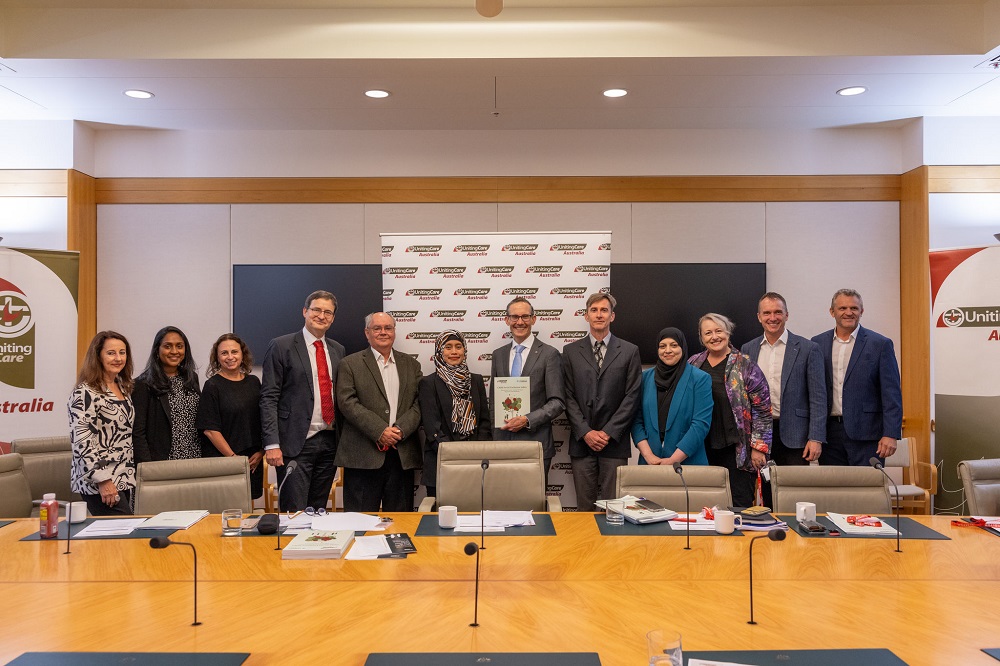Emma Larouche
5 April 2024: A research collaboration between the University of Canberra and UnitingCare Australia, the national body for the Uniting Church’s community services network, has found that more than 880,000 Australian children under the age of 15 miss out on a fair start in life.
The 3rd Child Social Exclusion Index was released at a Parliament House event last week, with Assistant Minister for Competition, Charities and Treasury and Assistant Minister for Employment, Hon Dr Andrew Leigh MP, UnitingCare network representatives and the University’s research team in attendance.

Child social exclusion is a measure of social and material disadvantage in which children lack the opportunities and resources to participate fully in their communities and feel connected.
The report updated the index of social exclusion risk for children under 15 years old in communities across Australia, based on data from the 2021 Census supplemented by additional administrative and microsimulated data.
Research lead Professor Riyana Miranti from the University’s School of Politics, Economics and Society, within the Faculty of Business Government and Law, said the indicators of disadvantage extended beyond income measures to show that the issue is widespread in society.
“Child disadvantage is not necessarily captured by income poverty only,” Professor Miranti said.
“While nearly 15 per cent of children live in areas with the highest rates of child poverty and the most exclusion risks, there are children who are not income-poor, but still at risk of social exclusion or who are experiencing other types of disadvantages.
“Further, the comparison between 2016 and 2021 data has found areas that are persistently at a higher risk of social exclusion.”
The report assessed social exclusion against six criteria: socio-economic, education, connectedness (such as a parent who can speak English, and family access to a motor vehicle), housing, health, and community and environment (facilities such as public parks, museums, tree cover and swimming pools).
It found that 884,569 children under 15 years old, in 391 communities across the nation, are in the bottom 20 per cent, which means they are most excluded.
UnitingCare Australia National Director Claerwen Little said the report highlighted the great divide in Australia between areas where children are given a fair go and those where they are not.
“Australia is raising a generation of children where one in six of them persistently feel excluded, and are excluded – and they deserve better,” Ms Little said.
“On a state-by-state basis, NSW, Queensland, South Australia and Tasmania are over-represented in child social exclusion, highlighting the continuing need for implementation of evidence and place-based initiatives aimed at enhancing child wellbeing.”
This latest Report is the product of a collaborative research consortium involving the University of Canberra, UnitingCare Australia and six UnitingCare network organisations: Uniting NSW.ACT,
Uniting Vic.Tas, Uniting Communities, UnitingSA, UnitingCare Queensland and Wesley Mission NSW.
UnitingCare Australia also collaborated with the University in 2013 and 2018 to produce the Child Social Exclusion Report.
Read the latest report here.
Photo by Photox Canberra Photography Services.


